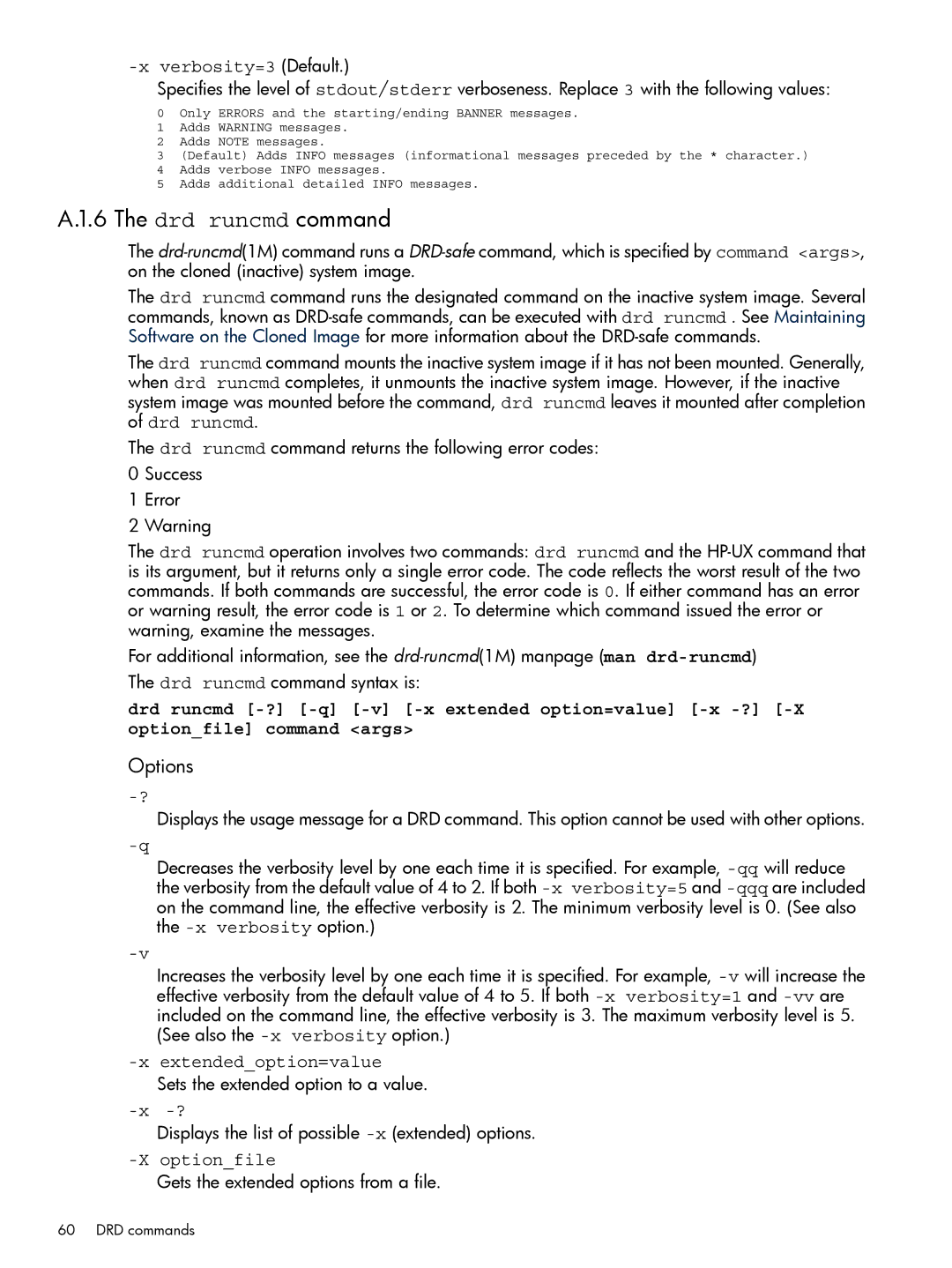-x verbosity=3 (Default.)
Specifies the level of stdout/stderr verboseness. Replace 3 with the following values:
0Only ERRORS and the starting/ending BANNER messages.
1Adds WARNING messages.
2Adds NOTE messages.
3(Default) Adds INFO messages (informational messages preceded by the * character.)
4Adds verbose INFO messages.
5Adds additional detailed INFO messages.
A.1.6 The drd runcmd command
The
The drd runcmd command runs the designated command on the inactive system image. Several commands, known as
The drd runcmd command mounts the inactive system image if it has not been mounted. Generally, when drd runcmd completes, it unmounts the inactive system image. However, if the inactive system image was mounted before the command, drd runcmd leaves it mounted after completion of drd runcmd.
The drd runcmd command returns the following error codes:
0Success
1 Error
2 Warning
The drd runcmd operation involves two commands: drd runcmd and the
For additional information, see the
drd runcmd
Options
Displays the usage message for a DRD command. This option cannot be used with other options.
Decreases the verbosity level by one each time it is specified. For example,
Increases the verbosity level by one each time it is specified. For example,
Sets the extended option to a value.
Displays the list of possible
Gets the extended options from a file.
60 DRD commands
